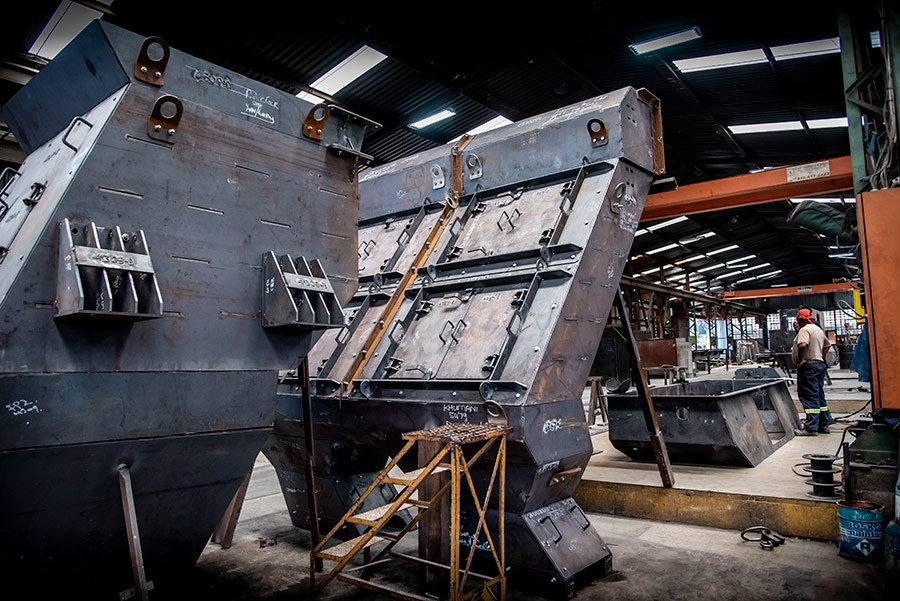Weba Chute Systems has established a reputation as certainly South Africa’s, and possibly the world’s, pre-eminent supplier of engineered chute systems. For long the most neglected part of any materials handling systems, the transfer chute is increasingly being recognised as a key piece of equipment that can enhance productivity and save mines.
“When Weba Chute Systems first started up in the 1980s, the chute was regarded as simply a piece of platework that could be supplied by any steel fabricator,” says Mark Baller, MD of Weba Chute Systems. “Since those early days we’ve been on a crusade to persuade our customers that this is a very short-sighted view. We do believe our efforts have met with success and certainly we are seeing an increased understanding in the mining community that chutes are an absolutely vital part of any materials handling system.”
Baller notes that chutes are responsible for up to 50 % of plant downtime. Given that this is the case, he stresses that it makes no sense for customers to try to save money by cutting corners and opting for chutes which are poorly designed and sometimes manufactured from inferior materials.
He also points out that Weba Chute Systems’ customers are essentially getting their Weba chutes for free. “This might seem a bold claim but we base it on the fact that our chutes will invariably pay for themselves within two to three years and sometimes less,” he states. “We’ve installed over 5 000 chutes in more than 50 countries over the years and received extensive feedback from our customers, so we know this prediction is accurate.”
As evidence that customers are starting to appreciate the critical role that chutes play in any well-functioning materials handling system, Baller points to Weba’s experience at the height of the Covid pandemic, when new capital projects by mines were put on hold resulting in a contraction – even if only temporary – of Weba’s order book.
“Over this same period, when we’re struggling to get project work, we noticed that mining companies did not cut back to any noticeable degree on maintenance of their chute systems and in fact our maintenance teams were kept extremely busy,” he relates. “We see this as an indication of the importance mines now attach to the once humble chute. Its status has definitely changed for the better.”
He adds that maintenance, including the supply of parts, used to constitute 15 to 20 % of Weba Chute Systems’ business. This rose to 45 % during the pandemic period although it has now dropped to around the 40 % level, reflecting the fact that Weba’s order book for new installations has been boosted as the mining industry implements previously shelved projects.
Based in Wadeville near Johannesburg, Weba has well-equipped premises and uses the latest technology to design and manufacture its bespoke engineered chute systems. This technology includes Discrete Element Modelling (DEM), which models the interaction between individual particles and boundaries to predict bulk solids behaviour, and 3D laser scanners, which facilitate more precise design and manufacturing of transfer chutes.





